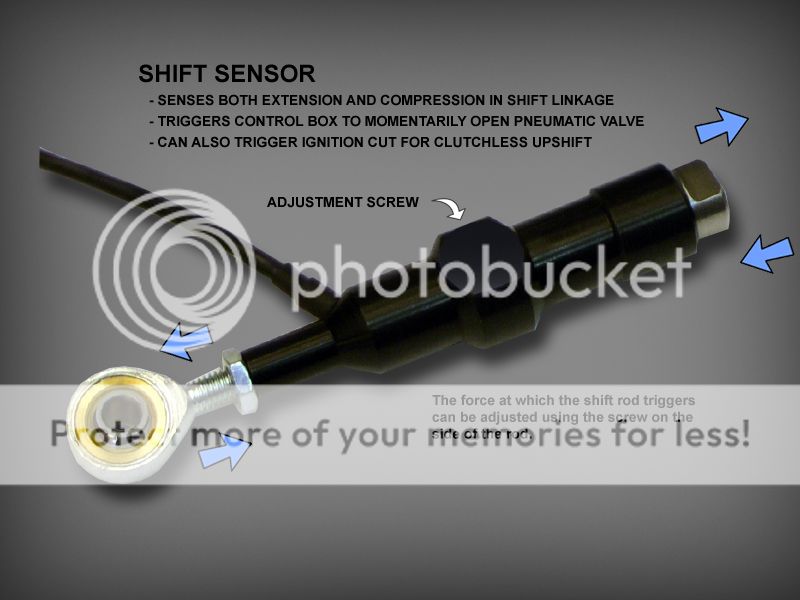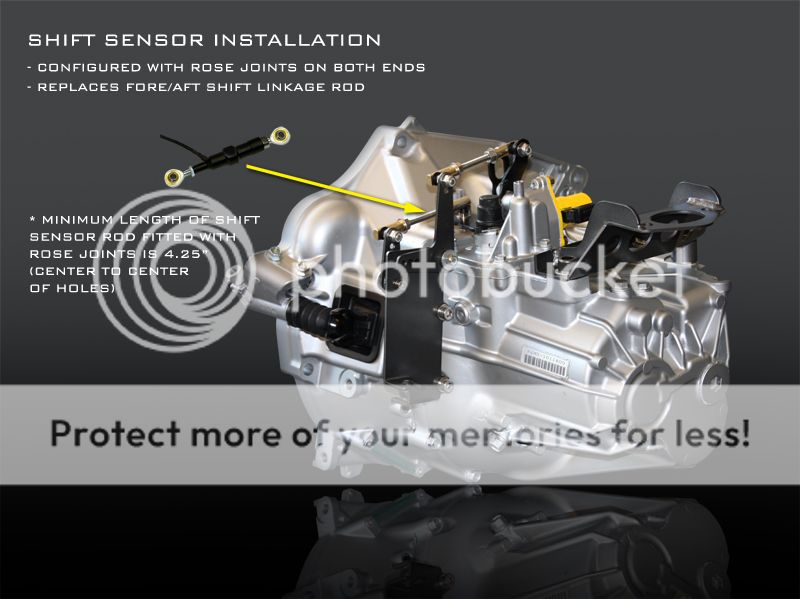For years now, I have tried to ‘heel/toe’ while threshold braking and quickly downshifting, and while once in a while I'd nail it, most of the time it was an uncoordinated embarrassment. Sometimes even downright scary! Having the ball of your right foot slip off the brake pedal while swinging that heel out can certainly upset the balance of the car at the worst possible time (just as you turn in). While thankfully, that doesn’t happen all the time, I do notice my ‘threshold braking’ foot pressure varies on the brake pedal as I swing my heel out. For me, it’s an uncomfortable feeling, especially for an ‘old-timer’ whose brain-to-foot challenged. But being the engineer type, I‘m always thinking of ‘technology aides’ to help compensate for what I lack in driving skills.
I asked myself the question… “Why can’t there be a simple auto-blip system for H-pattern manual transmission cars?” I had heard that the new Nissan 370Z sports cars have this as a standard feature. After hours of Google searches, it became pretty evident that a simple universal off-the-shelf system didn't exist (or at least that I could find). At that point, I decided to look at using some of the components used in a sequential paddle shift system, wondering if they could be adapted to my H-pattern application. In that effort, I came across a company called 'Flatshifter' (based in the UK). After speaking with Graham (super nice guy), it was clear they didn't make a product focused at H-pattern applications, but he was intrigued by my approach to adapting their off-the-shelf components to make it work. After asking tons of questions that their typical customer doesn't ask, I opted to 'take the plunge' and order the equipment needed for this little experiment.
The Alpha Test Vehicle:
1999 Lotus Elise GT Widebody


For my particular application, I have a Honda K24 2.4L coupled to a 6-speed Honda K-series transmission. That said, the methods I used should be considered to be universal and easily adapted to most any engine/manual transmission combination with a little innovative thought.

The Components Needed:
The first item needed is the 'Throttle Blipper', or technically a pneumatically-actuated device capable of mechanically blipping the spring-loaded throttle cam. Here is the actuator that Flatshifter manufactures. It makes use intake manifold vacuum to drive the throttle cam via the throttle stop screw located on almost all throttle bodies.

Here was my plan to mount the actuator to my Skunk2 70mm TB. The actuator must be solidly mounted so it doesn't vibrate loose or break/bend the threaded spindle shaft.
Original Configuration – Throttle Cable Bracket

Planned Configuration – Throttle Cable Bracket / Throttle Blipper Mount

In order to ensure the actuator spindle shaft was compatible with my Skunk2 70mm TB, Flatshifter needed to know the thread size of my stop screw and length of shaft required. I provided Graham with this photo.

I made the bracket in my garage from a piece of 1/8" cold rolled steel. While not the best photo in the world, you get the idea. The actuator was solidly mounted and easily moved the throttle cam without binding.

The next item needed is the Shift Sensor. In this case, I chose their shift sensor rod which inserts into the fore/aft shift linkage. I should note that if the rod doesn’t work well for your application, Flatshifter also has a shift knob that senses pressure fore/aft. Either way, the shift sensor will trigger the ‘Throttle Blipper’ via a small control box.

Here is where I selected to mount the shift sensor rod on my Honda transmission. The minimum length of the shift rod (fitted with rose joints) is 4.25” or about 110mm. I was actually lucky as my existing shift rod was exactly that length, so it fit perfect without modification. I actually thought I might have to modify a rocker arm slightly if the shift sensor rod was too long.

Here is a photo of it installed on the transmission. You can see the adjustment screw on the top of the rod that allows you to adjust the exact force needed to provide a trigger to the Throttle Blipper.

The last component needed is the Blipper Control Box. Simply put, the control box houses an electronically-controlled pneumatic valve that opens momentarily to apply vacuum to the Throttle Blipper (on the throttle body). The valve is triggered by the force sensor shift rod, which has an electrical cable that directly connects to the control box (along with 12vdc power). Here you can see I mounted the control box directly above my fuel rail. It’s important to keep the pneumatic lines (tubing hoses) as short as possible.

The Modifications To Make This Work
As I said earlier, this system was designed for use with a sequential transmission. As such, a sequential transmission works in a way where ‘pushing forward’ on the shifter ‘downshifts’, and ‘pulling back’ on the shifter ‘upshifts’. That means the Force Sensor Shift Rod provides two separate output triggers (wires).
- On downshifting (pushing shifter forward), the force sensor shift rod is compressed (typically), providing an input to the blipper control box thus activating the throttle blipper.
- On upshifting (pulling the shifter back), the force sensor shift rod is extended (typically), providing an output to use as an ‘ignition cut’ via ECU input (or other means).
As many of you may already see, this operation creates a problem for an H-pattern application. How does the system know if you’re upshifting or downshifting. In other words, when you pull back on the shifter, are you upshifting from 3rd to 4th? Or downshifting from 3rd to 2nd? And when pushing forward on the shifter, are you upshifting from 4th to 5th, or downshifting from 4th to 3rd?
In my application, I needed the force sensor shift rod to give the blipper control box a trigger in BOTH directions. That means a modified force sensor shift rod that sends a trigger to the control box on extension and compression. Graham (Flatshifter) was happy to help me out with a slightly modified version of the shift rod sensor and even equipped it with rose joints on both ends (not typically included).
But this modification would now mean I get a blip while upshifting, which is definitely undesirable. To solve that problem, I installed a small pilot relay (with N.O. contacts) controlled by my +12vdc brake light wire. This relay was installed between the shift rod sensor and controller, effectively allowing the trigger to activate the control box only when my brakes were applied. This ensures blips can only occur when braking and downshifting. When upshifting (no brakes), the blipper is disconnected electrically.
As I tested the system, I noticed that as I maneuvered the car in the paddock and put my foot on the brake to shift into reverse, it would blip. I didn’t like that so I installed a switch on the dash that completely disconnects power from the blipper control box. When I get out on the track, I enable the system by flipping the switch. Now anyone driving the car who prefers to heel/toe the ‘old school’ way can keep the system disabled.
I had a chance to try it at the track a couple weeks ago and it worked really well. I do need to make a few adjustments to get it just perfect, but I’ve no doubt it will meet my needs. I’ll shoot a short video of a track session where I’m using it. It’s so nice to keep your foot planted on the brake, slam downshifts, and have the throttle blipping.
Anyone interested in setting up one of these on their own car, just shoot me a message. I’m happy to help you with your particular application. The components of course you can get straight from Flatshifter, but before you go shelling out the dough ($), give me a shout. I can help you with the wiring & installation questions (prior to purchase of components). I just don’t want to steer someone down a road that may not work for them.
Cheers! Video coming soon!
Ken









































